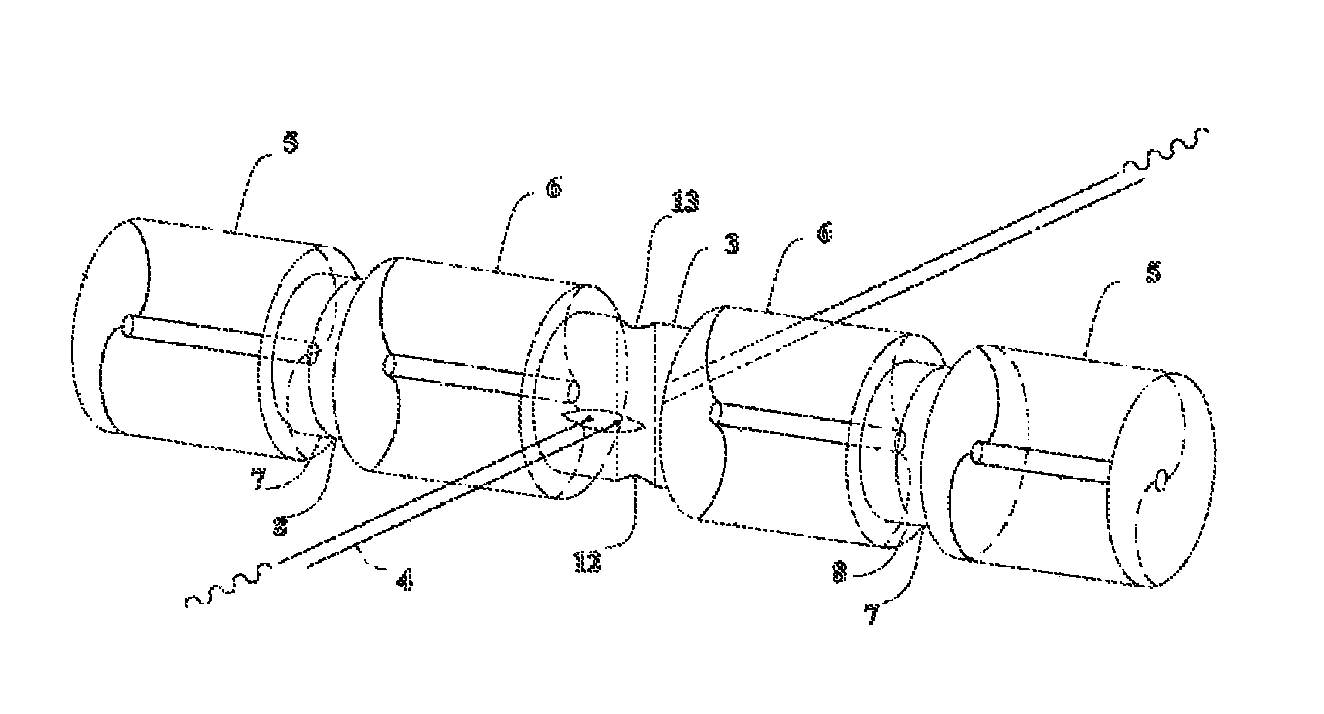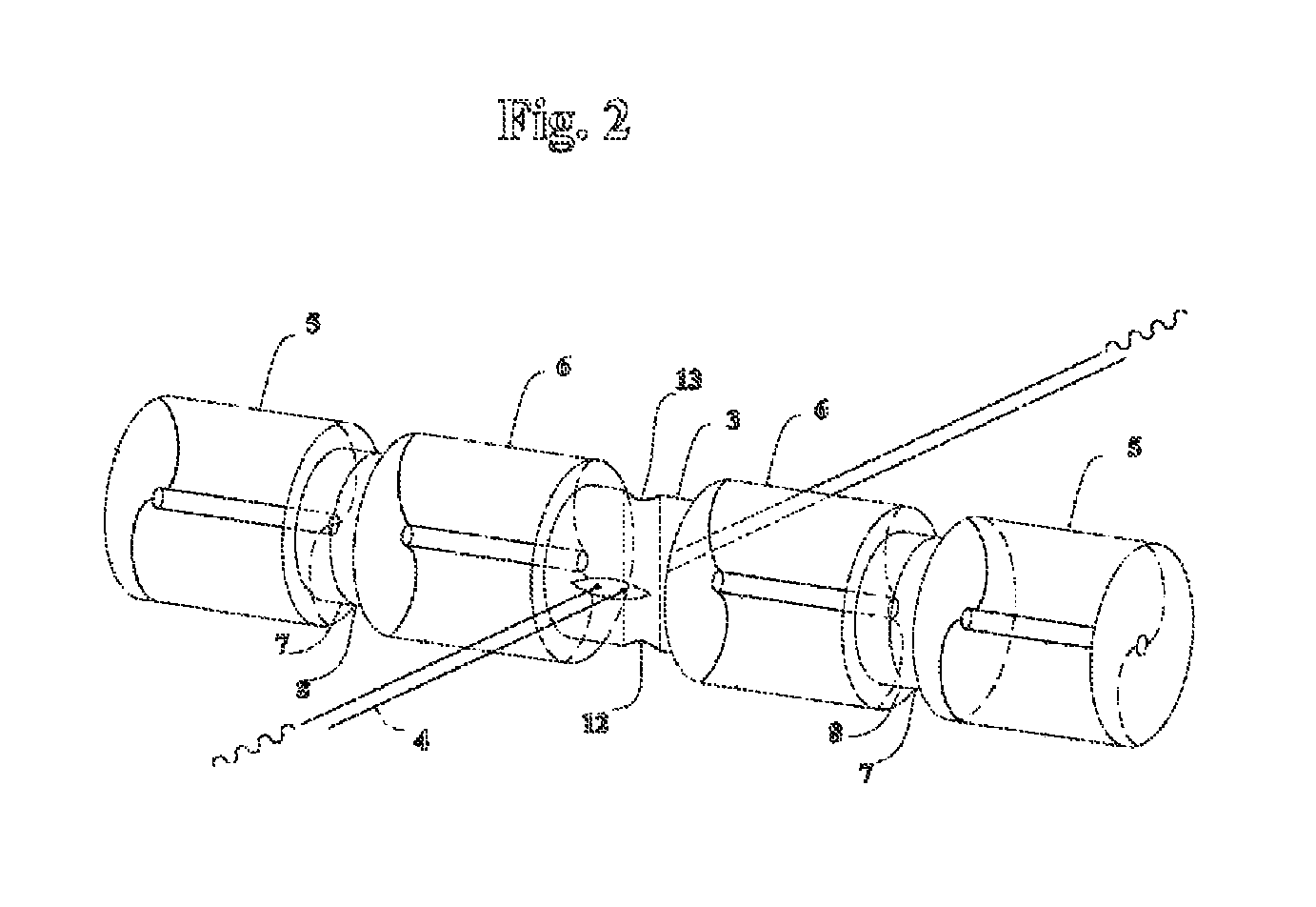Subsurface intelligent cluster of current energy converters
a current energy converter and subsurface technology, applied in the direction of electric generator control, machines/engines, mechanical equipment, etc., can solve the problems of not being able to intelligently seek and remain in the peak velocity region of ocean currents, changing ocean currents with time in location, depth and speed, and little advance in using ocean current energy, etc., to achieve the effect of increasing the total power generation, increasing the capacity of power generation, and no net torqu
- Summary
- Abstract
- Description
- Claims
- Application Information
AI Technical Summary
Benefits of technology
Problems solved by technology
Method used
Image
Examples
Embodiment Construction
[0016]The invention relates to an application of Bernoulli principle on each pair of rotors that rotate in opposite direction independently. FIG. 3 is used to illustrate this principle in details. When current flow pushes both rotors into rotation in opposite directions because of the drag force is larger on the top blade than that on the bottom blade in rotor 5 but it is exactly the opposite in rotor 6. The two rotors are rotating with the same rate when the resistances due to respective electrical generators 7, 8 are the same. The average flow speeds above and below the two rotors are the same because the two rotors rotate in opposite directions at the same rate. Therefore, Va equals Vb, that leads to Pa equals Pb according to Bernoulli equation, Eq. 1.
0.5(Va)2+Pa / ρ=0.5(Vb)2+Pb / ρ Eq. 1
where Va and Vb are speed, Pa and Pb are pressure, and ρ is water density.
[0017]However, rotor 5 rotates slower when the resistance increases in the connecting generator 7. This is accomplished by t...
PUM
 Login to View More
Login to View More Abstract
Description
Claims
Application Information
 Login to View More
Login to View More - R&D
- Intellectual Property
- Life Sciences
- Materials
- Tech Scout
- Unparalleled Data Quality
- Higher Quality Content
- 60% Fewer Hallucinations
Browse by: Latest US Patents, China's latest patents, Technical Efficacy Thesaurus, Application Domain, Technology Topic, Popular Technical Reports.
© 2025 PatSnap. All rights reserved.Legal|Privacy policy|Modern Slavery Act Transparency Statement|Sitemap|About US| Contact US: help@patsnap.com



